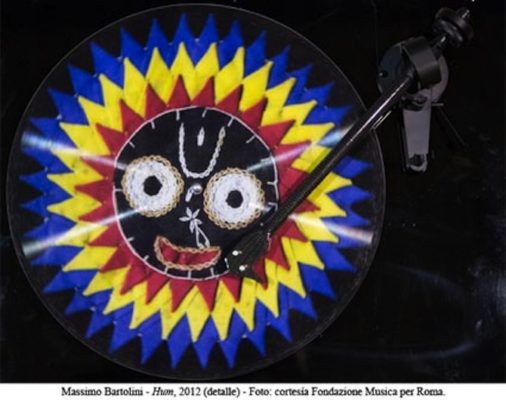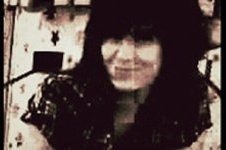Search
To search for an exact match, type the word or phrase you want in quotation marks.
A*DESK has been offering since 2002 contents about criticism and contemporary art. A*DESK has become consolidated thanks to all those who have believed in the project, all those who have followed us, debating, participating and collaborating. Many people have collaborated with A*DESK, and continue to do so. Their efforts, knowledge and belief in the project are what make it grow internationally. At A*DESK we have also generated work for over one hundred professionals in culture, from small collaborations with reviews and classes, to more prolonged and intense collaborations.
At A*DESK we believe in the need for free and universal access to culture and knowledge. We want to carry on being independent, remaining open to more ideas and opinions. If you believe in A*DESK, we need your backing to be able to continue. You can now participate in the project by supporting it. You can choose how much you want to contribute to the project.
You can decide how much you want to bring to the project.

Glenn Gould (1932-1982) is usually remembered for his peculiar manner of playing the piano, on a chair that was barely thirty-five centimetres off the floor; for his perennial sweaters, be it winter or summer; for his custom of raising one hand that dialogued with him while the other carried on touching the keys; for his social phobia; for even being Hannibal Lecter’s favourite interpreter. However, few will go any further to discover that the low chair enabled him to drag at the keys rather than hit them, as he was convinced, just like his master Alberto Guerrero, that this technique improved each sound. A side of him, that of investigator and thinker, that admirer of Arnold Schönberg as he was, led him to experiment with possible techniques as a means of musical communication. Studying reinterpretations and his rigorous introspection, as indicated by the curator of the show Anna Cestelli, «centred on the non-presence», led to what became defined as a love affair between Gould and the microphone; the «transmission of thought as a pure voice». This is the premise for the show HUM, by Massimo Bertolini and the baritone Nicholas Isherwood, an exhibition that can currently be visited at MARCO in Vigo, that pays homage to the scientific and speculative work of the brilliant Canadian player.
HUM and Singing North are the works in the project that Bartolini and Isherwood present along with a new piece realized specifically for MARCO; the performance Lettura, the reading out loud of the novel “The Loser” by Thomas Bernhard, a work that the writer dedicated to Gould after his death. As a complement, on the day of the opening there was a retransmission online of ’Phonology of Noise: The Voice as sound object’ (a meta-event, the recording of which can listened to on the web of Radical Matters) showing a selection of works, from the end of the sixties, that focus on the manipulation of the voice as a sonorous object. Sound poetry, experimental music, concrete music, sound activism and avant-garde black metal are a few of the experimental trends that can be heard in this almost two hours long recording.
HUM, (2012), the recording of a unique copy on a twelve inch vinyl picture disc, comes from the English term humming and is constructed out of the second version that Gould made in 1981 of the recordings of the Goldberg Variations of Bach. In them to the beat of the music, Gould hums to himself as he plays the piano, in an unconscious act that is incorporated into the final disc thereby modifying the usual relationship between a piece of classical music and its audience. The voice of Gould is shown as a perturbing element in the system, it forces us to realize acoustic zooms to work out what is going on beyond the notes, as at times we can even feel the physical presence of the interpreter, something that disrupts our listening experience. This singing under his breath is what Bartolini and Isherwood have extracted for their acoustic installation, HUM. In the DVD of the catalogue one can see how the recording session went: Isherwood sat in front of a computer (where one can see the video of the Variations, with Gould at the piano) interpreting in his own voice Gould’s vocal expressions, converting him into a sort of score in a studio recording that is a complex performance piece. A complex inter-textual exercise arises that thereby causes the author to fade away leaving only the voice –«absence of the subject, absence of the narrator»– in the tradition of the best sound poetry.
Singing North, (2012), a microphone with a stand and loudspeakers, is a textual collage composed and interpreted by Isherwood, based on the radio text The idea of North (1967), the first part of the trilogy Solitude Trilogy; a collection of three hour long radio documentaries produced by Gould between 1967 and 1977 for the Canadian Broadcasting Corporation. They reflect on the concept of «retiring from the world » and this one in particular questions, on a philosophical and geographical level, what is the concept «north». Words and phonetic fragments, as well as the clicks, whistles and other vocal manipulations form this recording in which Isherwood has managed to create a poetic text–«fictional imitations» in the words of Jonathan Culler– through radio testimonies that «speak», and as such don’t «crush», for the length of a little more than fifteen minutes.
The voice is without a doubt the main protagonist of this show. Its acoustic transformation, as a familiar sound and source of sonority, acquires, in the moment that the totality of the field of sound is considered, a presence or resonant intelligence, as Carolyn Abbate pointed out in her time. Bartolini and Isherwood manage to make the voice come and go as an autonomous element of the author or creator, granting it an instant out of place.

"A desk is a dangerous place from which to watch the world" (John Le Carré)